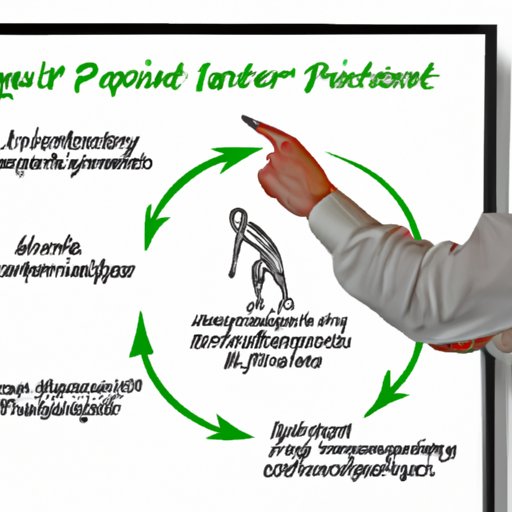
Introduction
When it comes to personal injury claims, one question that often arises is whether physical therapy can increase the settlement value. Many individuals pursuing a personal injury case wonder how physical therapy can impact their case and whether it is worth pursuing. This article aims to explore the role of physical therapy in personal injury settlements and how it can impact the value of a personal injury case.
The Role of Physical Therapy in Personal Injury Settlements
Physical therapy is a discipline aimed at helping individuals recover from injuries and improve their physical function. It involves various treatments such as exercises, massage, and manipulation, among others, and its goal is to restore mobility and reduce pain. In personal injury cases, physical therapy is often used to help individuals heal from their injuries, alleviate pain, and improve their overall physical function.
When it comes to personal injury claims, physical therapy can play a crucial role in ensuring the patient receives adequate medical treatment and is on the path to recovery. In some cases, physical therapy may be necessary to reduce the long-term effects of an injury and prevent future injuries from occurring. Additionally, physical therapy can provide legal and financial benefits to the injured individual.
How Physical Therapy Can Impact the Value of Your Personal Injury Case
Physical therapy can also have a significant impact on the value of a personal injury case. Injured individuals who receive physical therapy may be able to receive a higher settlement offer due to the increased medical expenses associated with the treatment. Physical therapy can also demonstrate that the individual is committed to their recovery and is taking active steps to improve their physical function, which can help their case.
There have been numerous cases in which physical therapy has resulted in increased compensation for clients. In some instances, the mere fact that an individual pursued physical therapy can demonstrate that their injury was severe and required significant medical attention. Therefore, it is essential to pursue physical therapy after an injury to demonstrate the severity of the injury and its effects on daily life.
The Importance of Physical Therapy in Achieving Maximum Compensation
In addition to increasing the value of a personal injury case, physical therapy can help achieve maximum compensation. Physical therapy can help injured individuals focus on their recovery and ensure they receive adequate medical treatment. It can reduce the risk of long-term medical expenses and improve health outcomes. According to a study by the Centre for Disease Control and Prevention, early physical therapy can lower the risk of opioid use in patients with chronic pain.
Other studies have suggested that physical therapy can reduce the likelihood of surgery and medical complications, thereby lowering healthcare costs. The reduced risk of long-term medical expenses and improved health outcomes can result in a higher settlement offer from insurance companies and maximize compensation for injured individuals.
From Injury to Settlement: How Physical Therapy Can Help You Get There
Understanding the timeline of a personal injury claim is essential to maximizing compensation. Physical therapy can play a role at each stage of the personal injury claim process. Immediately following an injury, physical therapy can help reduce pain and inflammation and prevent further damage. Later during the recovery process, physical therapy can help restore mobility and improve function.
Physical therapy can also assist in the settlement negotiation process. By utilizing physical therapy documentation and medical records, injured individuals can prove the severity of their injury and showcase their commitment to their recovery. Therefore, it is essential to engage in physical therapy early on and document the treatment received throughout the recovery process.
Lastly, to maximize compensation, it is crucial to inform physical therapists and healthcare providers of the legal implications of the injury. They can provide medical documentation that is admissible in court and provide evidence of how the injuries impact daily living activities and working ability.
The Connection Between Physical Therapy and a Favorable Settlement Outcome
The connection between physical therapy and a favorable settlement outcome is evident when considering the evidentiary benefits of the treatment. Physical therapy has numerous evidence-based benefits in recovering from an injury and restoring function. It can also demonstrate the severity of the injury and the significance of the medical treatment required. Therefore, insurance companies may be more willing to offer a higher settlement to those who have received physical therapy.
It is necessary to highlight to insurance adjusters the significance of physical therapy, not only in injury recovery but also in demonstrating the severity of the injury to the court. In doing so, they offer a strong case that physical therapy is an essential part of recovery and can, in many cases, help in achieving maximum compensation.

How Insurance Adjusters View Physical Therapy in Personal Injury Cases
Insurance adjusters typically view physical therapy positively in personal injury cases, as it is an essential part of medical treatment for many injuries. However, they may be cautious about approving physical therapy expenses, as it can add to the overall cost of the claim. It is essential to communicate with insurance adjusters the financial and legal benefits associated with physical therapy. Highlighting the evidentiary value of physical therapy records can assist in achieving an optimal settlement offer.
The Evidentiary Value of Physical Therapy in a Personal Injury Lawsuit
Physical therapy can play an essential role in the evidentiary process of a personal injury lawsuit. Physical therapy documentation such as medical records, treatment plans, and session notes can serve as evidence in settlement negotiations or court proceedings. Documenting physical therapy treatment received throughout the recovery process demonstrates the severity of the injury, the efforts taken to recover, and the impact on daily living activities and employment. Therefore, it is essential to maintain organized records of physical therapy treatments received post-injury.
Conclusion
Physical therapy can have a significant impact on personal injury claims, from increasing the settlement value to demonstrating the severity of the injury and its effects on daily living activities. By engaging in physical therapy early on and committing to the recovery process, injured individuals can demonstrate their commitment to their recovery and maximize compensation. Therefore, it is essential to explore physical therapy options and communicate its value to insurance adjusters. Engaging the expertise of a physical therapist and a personal injury lawyer can provide the best outcomes for injured individuals and clients.




